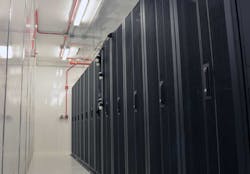Server Health and Uptime In Edge Cloud Environments
Jeff Klaus, General Manager of Intel Data Center Management Solutions at Intel, explores the connection between server health and edge cloud environments, and data center management optimization.
Jeff Klaus, General Manager of Intel Data Center Management Solutions
Server Health and Uptime In Edge Cloud
An autonomous vehicle enters a busy intersection, deftly avoiding a jaywalking pedestrian who has stepped off a curb and into harm’s way while staring at his smartphone. A doctor performs a robotic-assisted surgery, aided by a three-dimensional camera and mechanized arms for holding medical instruments, which offer greater dexterity and range of motion than a human performing the same procedure. At a remote mining site, a combination of wearables and smart sensors monitor truck drivers and machine operators who are at risk for injury, tracking their location and movement as well as hazardous environmental conditions, and sending alerts that aid in rescue operations.
As the counterpart to the cloud or traditional centralized data centers, it is the edge cloud that provides these newest possibilities in IoT applications. Across a wide range of verticals, including agriculture, construction, healthcare, Oil & Gas, and retail, enterprises are augmenting cloud computing with edge computing for certain types of workloads, especially latency-sensitive applications. While cloud computing excels in resource-intensive data processing and workloads such as Artificial Intelligence training, it creates issues with latency for some workloads when data must travel all the way to the data center and back again. For this reason, enterprises are benefiting from a combination of cloud computing and edge deployments for use cases that require real-time responses and experiences.
An edge cloud strategy places intelligent edge nodes closer to local resources, equipment and devices, with software to deliver services in a way that’s similar to using public cloud. Typically, cloud services run on large-scale data centers. However, edge clouds are hosted by micro-data centers that store, analyze and process data faster than is possible using a connection to a centralized data center.
Managing power usage in a micro-data center serving the edge can be complex undertaking. A data center management solution that provides accurate, real-time power and thermal monitoring and management for individual servers, groups of servers, racks, and other IT equipment, such as PDUs, offers multiple advantages for IT administrators in edge computing environments.
Gartner predicts that by 2025, 75% of enterprise-generated data will be created and processed at the edge, outside the cloud or a traditional centralized data center, up from just 10 percent two years ago. Consequently, by 2022, enterprises are projected to spend an average of 30 percent of their IT budgets on edge cloud computing, according to a survey by Analysys Masons.
Technology and Humanity Have Never Been So Interdependent
With edge cloud deployments becoming more popular, edge cloud data center managers are facing increasing pressure to monitor server health and maintain uptime. Servers in edge cloud environments operate at relatively high temperatures, and unlike standard data centers, very often aren’t staffed with dedicated IT personnel on site to conduct much-needed power and thermal monitoring and management.
Data center management solutions, through an easy-to-use dashboard, enable edge cloud deployments to be managed remotely. These tools provide high-value monitoring and management capabilities addressing power and thermal issues that are challenging IT staff in edge cloud environments.
Managing power usage in a micro-data center serving the edge can be complex undertaking. A data center management solution that provides accurate, real-time power and thermal monitoring and management for individual servers, groups of servers, racks, and other IT equipment, such as PDUs, offers multiple advantages for IT administrators in edge computing environments. These tools are simple to deploy and offer interoperability among diverse server models as well as a variety of products from PDU and rack suppliers
By providing granular sub-component failure analysis and out of band (OOB) real-time utilization data concerning CPU, disk and memory, data center management solutions enable edge cloud data center managers to accurately assess utilization and conduct server health component monitoring. Data center management solutions will even send alerts to remote IT staff concerning power and thermal events, thereby significantly improving server uptime. Whether supporting an industrial or consumer application, an edge cloud data center is only effective when it remains available, up and running.
By providing detailed information about server power characteristics, data center management solutions help IT staff to set fixed-rack power envelopes and safely increase server count per rack, which improves data center utilization. Aggregating the data for the rack, row, and room with temperature data for the server inlets creates a real-time view of power consumed by the servers.
Because data center management solution provide real-time power and thermal data for racks, rows, blades, and data center rooms, IT staff are able to not only to manage data center hotspots, but also to perform power usage planning and forecasting in edge environments.
This last point cannot be overemphasized. With the current digital transformation trend strongly underway, and as our businesses plunge into the Fourth Industrial Revolution, the probability of needing edge facilities in all their various form factors, and numbering in the thousands if not tens of thousands, globally, would seem all but a certainty. Hence, empowering edge cloud data center managers to make data-driven decisions to maintain uptime will become essential not only to ensure availability and business continuity, but a new way of living and working upon which technology and humanity have never before been so interdependent.
Jeff Klaus is General Manager of Intel Data Center Management Solutions, Intel.

